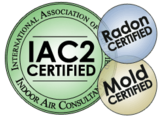 The main difference between an appraisal and an inspection is that an appraisal deals with the value of a home, while an inspection deals with the condition of the home. Inspections and appraisals are both important parts of the home buying process, and buyers should do both to protect their financial interest in a home — and give themselves peace of mind that they’re making a smart purchase. Inspections and appraisals serve different functions, but both give you the insights you need to avoid large financial missteps. source
The main difference between an appraisal and an inspection is that an appraisal deals with the value of a home, while an inspection deals with the condition of the home. Inspections and appraisals are both important parts of the home buying process, and buyers should do both to protect their financial interest in a home — and give themselves peace of mind that they’re making a smart purchase. Inspections and appraisals serve different functions, but both give you the insights you need to avoid large financial missteps. source
An appraisal is a comparison tool used to know how the value of a home compares to other recent sales in the area. During an appraisal an appraiser will do a visit to gather a general assessment of a home, analyzed with the help of nearby comparable sales. The goal of an appraisal is to determine the fair market value of a property. It is conducted by a licensed professional appraiser. While an appraiser will visit a home in person, the majority of the work will be done in their office, as they compare the home’s features, location, and finishes with other comparable recent sales in the area. Most lenders do require appraisals in order to approve financing. Lenders want to protect their investment by ensuring they’re not financing a loan for more than the property is worth.

What is an Inspection?
When buying a home of any age, size, or style, it is vital to be aware of its current condition. The main three components of a HomeTech Pre Home Inspection for buyers are safety, habitability, and potential high cost repairs. Our detailed home inspections for buyers report will cover every aspect of the home’s current condition from foundation to roof, inside and out all centered around the 3 main components. See the full inspection page for more details specific to our process. Lenders providing conventional financing do not usually require home inspections, but they are still strongly recommended. FHA or VA loans usually do require inspections. While some buyers opt to waive their inspection contingency to make their offer appear stronger, this means they’re essentially buying the home “as-is,” and any issues discovered after closing will fall 100% to the buyer to repair, even if they were present before closing.
The main difference between an appraisal and an inspection is that an inspection will help a buyer be aware of safety, habitability and potential high cost repairs whereas an appraisal is a general assessment of a home as compared to others in the area.
What happens during an appraisal?
During an appraisal, a licensed appraiser evaluates the home you want to buy in person and gives you an estimate on how much it’s worth. Typically, the appraiser is chosen by the lender but paid for by the buyer as part of the closing costs. The appointment usually takes about an hour, and then the appraiser will complete the report back at their office.
1. Assessment of property: The appraiser will walk through the home, taking note of its condition, finishes and location — consider it somewhat like a light inspection.
2. Review of comparable sales: The appraiser will use the findings of their walk-through to identify similar homes that have sold recently in the neighborhood. This will help them decide upon a fair market value.
3. Final report: The appraiser will deliver a physical report on the fair market value of the home, including photos and descriptions of comparable sales. In most cases it’s just the lender and the buyer who will receive copies of the report. The seller may request a copy of the appraisal report, but in most cases you are not required to share it.
Ideally, the appraisal will come back higher than the agreed-upon sales price. That indicates that you’re paying less than the fair market value and your lender will approve the loan.
What to expect from a HomeTech home inspection
 Since the goal of a home inspection is to get a comprehensive report of the condition of the home you’re buying, a home inspection takes between three and four hours, sometimes more. Unlike an appraiser who does a visual check of the home, your inspector will both examine and test functionality of your home’s key systems, including:
Since the goal of a home inspection is to get a comprehensive report of the condition of the home you’re buying, a home inspection takes between three and four hours, sometimes more. Unlike an appraiser who does a visual check of the home, your inspector will both examine and test functionality of your home’s key systems, including:
- Attic
- Basement
- Crawlspace
- Structural components
- Windows
- Doors
- Electrical System
- Plumbing system
- H.V.A.C. system
- Kitchen
- Bathrooms
- Interior rooms
- and more
HomeTech’s detailed home inspections for buyers report will cover every aspect of the home’s current condition from foundation to roof, inside and out all centered around the 3 main components.
1.) Safety: You want to move into a home that’s safe for you and your family. A home inspection for buyers report will determine potential safety concerns that you might not realize upon viewing a property. Safety is important, as a faulty electrical system that is ignored could easily turn into a fire hazard. A leaking faucet could turn into hidden mold, causing health problems. Or a staircase with non-permitted work could result in serious injury to those living within the home.
Unique to Utah, it’s important to get your home tested for Radon, as 1 in 4 homes in Park City, Heber City and surrounding areas will test positive for Radon. Radon gas can seep into a home from the soil through dirt crawlspaces, cracks in the foundation and walls, floor drains, pipes and sump pumps. Radon can enter any home, old or new, even those with no visible cracks. Each building is unique, and the ground beneath it is also unique.
2.) Habitability: Is this home a place people could live? In this part of an inspection, we’ll look over the electrical system, plumbing and heating/air conditioning. In a home inspection, we’ll use infrared technology to determine if the heating systems work correctly, as well as check for leaking pipes and check to see that all outlets and switches are in working condition. As a new home owner, dealing with a broken heat source or leaky pipes could be a headache upon moving in. It is important to get items that will effect the way you use and live in the house addressed quickly.
3.) Potential High Cost Repairs: These are sometimes known as “deal breakers” or a negotiating tool in an inspection report. Most of these items will come up in a HomeTech Inspection report as “Repair or Replace” – this means the item is not functioning as intended and needs repair or replacement. Further evaluation is usually needed by a qualified licensed contractor or speciality tradesman dealing with that item or system. Examples of these types of items include roof in need of major repairs, structural issues, heating/cooling malfunction, water leaks/damage/mold, foundation cracks and improper ventilation.
Extreme mold can be a very costly repair. This is the leading cause of dry rot, major structural damage and toxic mold. It is important that grading of the property slopes away from the home. The roof must be inspected and be watertight. Plumbing throughout the home must be free from leaks. A home inspection includes a visual inspection for mold and mold producing conditions; such as moisture intrusion. It may include the use of specialized equipment in warranted, but the price does not include testing. Mold testing can be added to a home inspection at a discounted rate if warranted, or desired by the client. See Pricing for details.
Why disclosures aren’t enough: In most states, sellers are required to disclose underlying issues in the home that they know exist (specific disclosure requirements vary by state). While disclosures are an important protection, they only cover un-repaired issues that the seller knows about — there’s no guarantee that the home is free of other underlying issues or that the repairs were made correctly. A home inspection is simply the best way to find out about any potential problems in the home. source
How are home inspections and appraisals similar?
Despite having two different processes and requiring the services of two different professionals, appraisals and inspections do share some similarities:
1. Appraisers and inspectors are licensed: Both roles require licenses and extensive training. Both appraisers and inspectors act as impartial third parties, paid to provide their professional opinion.
2. Buyers pay for both inspections and appraisals: Usually, the buyer selects the home inspector they want to work with and the lender selects the appraiser. The buyer pays for both the inspector and the appraiser, unless otherwise negotiated.
3. Appraisal and inspection both occur during escrow: The home inspection usually happens within the first week after your offer is accepted — the sooner the better, so there’s time to fix any issues flagged in the inspection report or renegotiate with the seller. The appraisal also happens during the escrow period, usually a week or two before closing.
4. Appraisal and inspection results allow for negotiations: Assuming you’ve structured your offer to include contingencies for both the appraisal and inspection, you’ll be allowed to renegotiate your offer based on the findings. If the appraisal comes back low, you’re allowed to renegotiate with the seller to figure out how to cover the difference between the appraised price and the offer price. Similarly, if the inspection report uncovers significant repairs, you’ll have a period of time where you can request repairs or credits, or back out of the deal without losing your earnest money.

